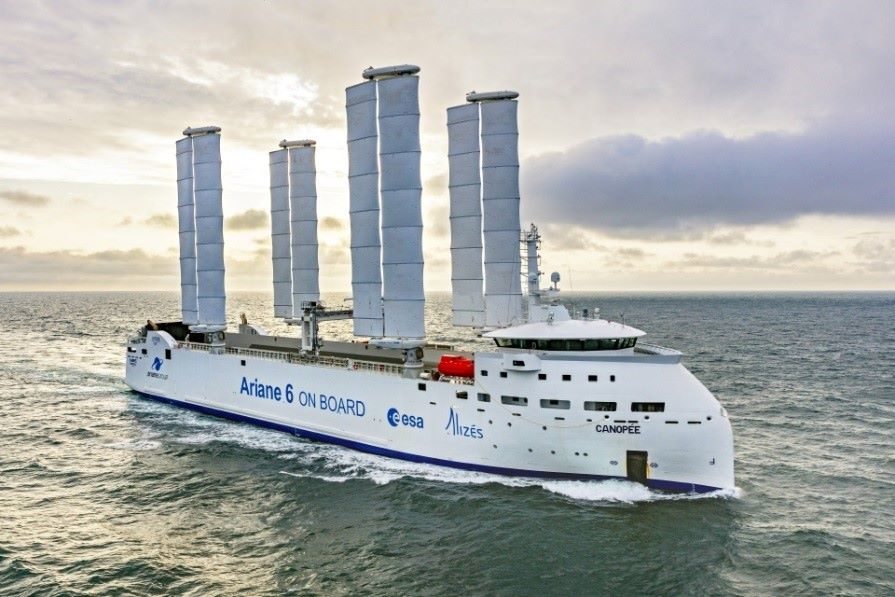
Visit Our Sponsors |
|
|
|
|
|
|
|
|
|
|
|
|
|
|
|
|
|
|
|
|
|
|
|
|
|
|
|
|
|
|
|
|
|
|
|
|
|
|
|
|
|
|
|
|
|
|
|
|
|
|
|
|
|
|
|
|
|
|
|

Canopée, equipped with collapsible wings, combines diesel propulsion and wind assistance. Photo: International Windship Association
The International Windship Association (IWSA) has issued an open letter to attendees at the 28th Conference of the Parties of the UNFCCC (COP 28), calling for them to recognize the vital role of direct wind propulsion energy use in the decarbonization of the maritime sector, in line with recent targets set by the UN body for shipping, the International Maritime Organization (IMO), and the UN’s Sustainable Development Goals (SDGs).
IWSA’s December 5 letter calls for the funding of an “SDG Delivery Fleet,” a fleet of small and medium-sized vessels that are either wind-assisted or use wind as their primary power source, for use in regions at greatest risk of climate change impact.
“Adopting a balanced ‘energy-centric’ approach in the areas of policy, regulation and finance would ensure that direct and highly valuable energy sources are not sidelined, undervalued and under-funded just at the time when we need to be scaling up all renewable energy sources,” said IWSA Secretary General Gavin Allwright. “This is an energy source that could deliver savings of up to 1% of global [greenhouse gas] emissions alone, but would also lower the total cost of the energy transition in the shipping industry by effectively saving enough in fuel costs over the next 25 years to meet that transition price tag to the tune of $1-1.5 trillion, while all the time providing hundreds of thousands of quality, high-skilled jobs.”
The IWSA said that one significant advantage of wind energy use by the maritime sector is freeing up decarbonized energy sources for other industrial sectors. Since oceangoing ships can easily utilize wind energy, this would reduce the industry’s reliance on the supply of alternative fuels, the group added.
Currently, there are 31 large oceangoing vessels that have wind-assist technology systems installed, equaling a transportation capacity of approximately 2 million deadweight tons of cargo. There are eight wind-ready ships in operation, 22 with wind propulsion technology installations pending, and five newbuild ships on order that will have primary wind propulsion technology installed.
RELATED CONTENT
RELATED VIDEOS
Timely, incisive articles delivered directly to your inbox.


